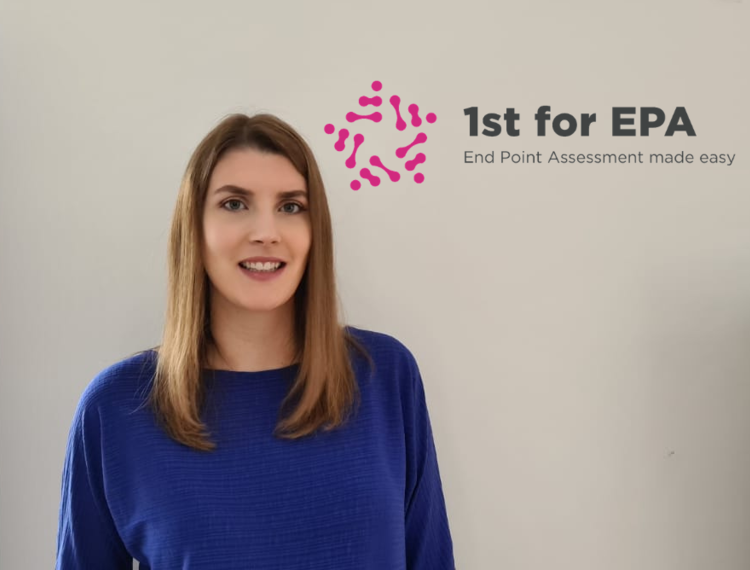How Training Providers can prepare Apprentices for EPA

@1stforEPA – Preparing for end point assessment (EPA) is a large part of a training provider’s role. Get this right and you can greatly improve your apprentices’ confidence, pass rates, and even your Ofsted report.
The Apprenticeships Service recently published its Road to a Quality Apprenticeship. In it, they make it clear that training providers should:
- Agree arrangements for EPA practice and preparation
- Agree clear actions with apprentices.
Here are 1st for EPA’s tips for prepare your apprentices for EPA.
1. Embed EPA into the whole apprenticeship programme
EPA should not be left until apprentices near gateway – it should be built into the programme right from the beginning. This is a key thing that Ofsted will look for. They will expect you to plan according to individual apprentices and their needs.
Ofsted will also look at your choice of EPAO and what they offer. For more advice on what Ofsted look for when it comes to EPA, see this article.
2. Choose your EPAO and get their guidance materials
As a training provider, many employers will ask you to research EPAOs and advise them on the best option. One of the first questions you should ask EPAOs is what support they offer.
1st for EPA has detailed guidance for every standard assessed. This includes what to expect from EPA, how to prepare, and how to achieve a Pass and Distinction. There are also mock tests for every standard that involves a knowledge test.
EPAOs should also fully brief training providers on the EPA process, timescales and best practice.
Once you’ve chosen your EPAO, make use of the guidance and preparation materials they provide.
3. Put the onus on the apprentice to take control of their own learning
It may sound obvious, but it can be really useful to remind apprentices that they are in control of their learning, and this includes EPA preparation. EPA should be something they are actively preparing for, and not passively taking part in. Don’t shy away from giving your apprentices direct actions to prepare for EPA.
You may find this article useful: How do I know if my apprentice is ready for EPA?
4. Discuss the pass and distinction criteria
In each standard’s Assessment Plan, and 1st for EPA’s Toolkits, apprentices can see what they need to do to achieve a pass, and what extra they can do to achieve a distinction. Hold an open discussion around these – perhaps in groups of apprentices who are at a similar stage in their journey.
You might ask apprentices for their ideas on the type of answer they could provide for each. Some areas to explore are:
- What level of detail would they go into?
- Does their answer give enough depth?
- Do they show their own skill, and not that of the team/company?
- Do they show the tools they used, the people they work with and what their decisions were based on? (This one will differ depending on the standard.)
Another approach is to create a few dummy answers and hand these out to apprentices. Ask them to read through and tell you if they believe it is a ‘pass level’ or ‘distinction level’ answer, and why. The aim is to encourage them to think critically and identify any gaps or areas for improvement.
5. Carry out mock EPA
Carrying out a full or partial mock EPA can be extremely beneficial. It allows apprentices to experience EPA and shine a light on their own areas of strength and weakness.
Try to replicate the EPA method, whether it’s an interview with questions and answers, a more relaxed discussion, or a written submission. Use your Toolkit or EPAO guidance to see the format that EPA takes and how it is carried out.
One way to carry out a partial mock is to recreate the assessment method, one-on-one with an ‘assessor’. Many training providers have their tutors carry out mocks with other tutors’ apprentices. This way, the apprentice isn’t familiar with the tutor and the mock feels more formal. They are more likely to behave as they would in their actual EPA.
Pick some of the assessment criteria at random and ask the apprentice how they demonstrated it in their role. You might want to tailor this to the standard – if the EPA involves a discussion or interview, see how well they can speak about it. If the criteria is assessed through a written method, ask them to put in writing how they have demonstrated it.
For spoken assessments, you might choose to record the discussion so apprentices can listen back and judge their own performance against the pass and distinction criteria.
Encourage apprentices to prepare for any mock assessments as they would for their real EPA. They will get much more out of it this way.
6. Reasonable adjustments
If you have apprentices who require reasonable adjustments to undertake their EPA, submit these to the EPAO as soon as possible to allow the appropriate arrangements to be made. Each EPAO should have a Reasonable Adjustments Policy that allows for fair adjustments to be made for those who need them. To see examples of what is considered reasonable, see the Institute for Apprenticeships’ Reasonable Adjustment Guidance and their Reasonable Adjustment Matrix.
Conclusion
End point assessment can seem daunting to apprentices, but with good preparation it is manageable. Help your apprentices prepare and you’re setting them up for success – as well as making yourself a quality training provider.
Helen Shinner, Managing Director, 1st for EPA











Responses